Find Your Perfect Kite Board: A Complete Buying Guide
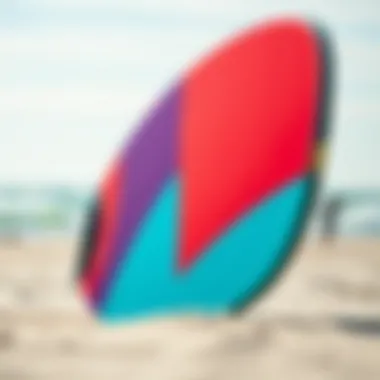
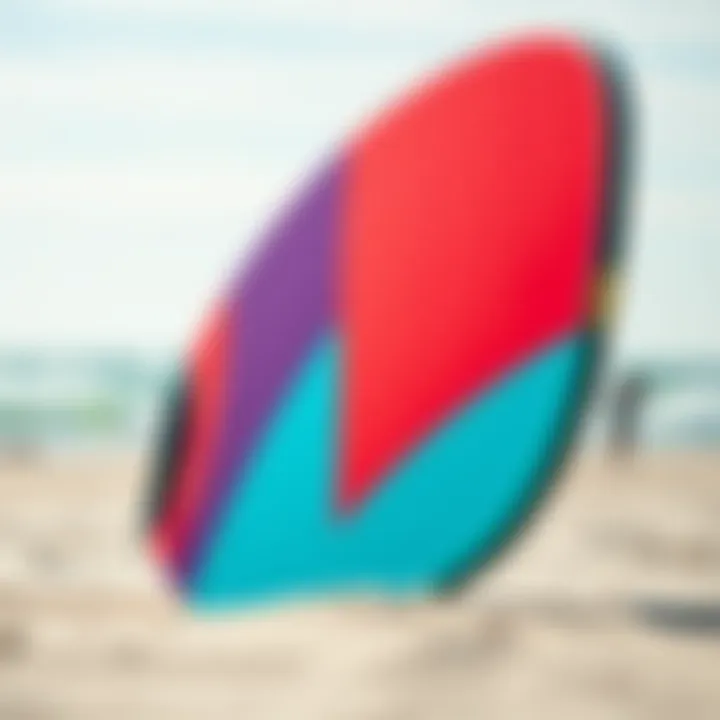
Intro
Choosing the right kite board can be quite a chore, especially when you're faced with a market brimming with options. There's a lot riding on this decision—both metaphorically and literally. So whether you're just dipping your toes into the sport or you're a seasoned kite boarder hunting for the latest gear, it’s crucial to navigate this sea of choices carefully. This guide will unravel some essential factors to consider before making the leap into your purchase.
Equipment Insights
Latest Gear Reviews
The kite boarding landscape is always evolving, with manufacturers releasing new boards that incorporate innovative designs, materials, and technology. It’s crucial to stay up-to-date with the latest reviews to ensure you make an informed decision.
When looking at different boards, consider their specifications. For instance, a board like the Naish Motion is highly regarded for its stability and performance in choppy waters, while the Slingshot Misfit is loved for its versatility and ability to handle various conditions. Reviews often highlight features such as shape, flex, and materials used. These elements greatly impact how a board performs in the water.
"Selecting a kite board should never be a hasty decision; it'd be like trying to catch a wave without knowing which way the wind blows."
Additionally, checking online forums or communities, such as those found on Reddit, can provide real-world insights from fellow kiteboarders on different board models, which further helps refine your choices.
Essential Gear Maintenance
Once you've bagged a kite board that seems to fit just right, taking care of it is paramount. Here are some must-dos:
- Regular Cleaning: Rinse off sand and salt after each session.
- Inspection: Check for any damages before and after use. Replace parts if necessary.
- Storage: Store your board in a cool, dry place to prevent wear and warping.
Neglecting maintenance may lead to costly repairs down the line and could even affect your riding performance. A well-maintained board significantly enhances your overall kiteboarding experience.
Technique Exploration
Beginner Techniques
For newcomers to kiteboarding, it might be a tad overwhelming to leap right into the deep end. Learning the ropes is essential to not just enjoy but also to ensure safety on the water. Start with mastering the basics, such as:
- Controlling the kite for smooth take-offs.
- Understanding how to ride upwind—this is pivotal for both beginners and experts.
- Practicing body dragging for an easier recovery when you fall.
Advanced Maneuvers
Once you have the fundamentals down pat, it's time to soar higher with advanced techniques. Many experienced kite boarders focus on tricks like:
- Jumping: Getting some air can be exhilarating, but it requires solid control of your kite.
- Turning: Carving sharp turns can improve your speed and make for a more fun ride.
- Using the Waves: Navigating in and out of waves adds an extra layer of excitement and skill to your sessions.
Investing time to develop these techniques could differentiate an average kite boarder from a skilled one. As the old saying goes, practice makes perfect.
The End
Understanding Kiteboarding
In grasping the essence of kiteboarding, one begins to appreciate the immense thrill and skill involved in this exciting sport. It's not just about riding the waves; it's about harmonizing with the wind and water to create a fluid experience that few activities can replicate. Understanding kiteboarding serves several purposes—it unravels the basics for novices, provides foundational knowledge for purchase decisions, and enriches the overall experience for seasoned kite enthusiasts. When delving into the intricacies of kiteboarding, one can better navigate choices related to equipment, techniques, and even community involvement.
What is Kiteboarding?
Kiteboarding, often referred to as kitesurfing, is a water sport that combines aspects of surfing, windsurfing, and paragliding. At its core, kiteboarding involves riding on a board while being pulled by a large, controllable kite. The kite acts as a sail, harnessing the wind's power to propel the rider across the water. This exhilarating activity can take place in various bodies of water—whether it be the vast ocean, tranquil lakes, or even well-formed rivers. The versatility of kiteboarding is one of its many charms, offering enthusiasts the chance to express their style, be it in flat, calm waters or choppy seas where jumping and tricks come into play.
Brief History of Kiteboarding
The roots of kiteboarding stretch back to ancient cultures, where kites were primarily utilized for fishing and as a means of transport on land. However, the sport as we know it began to take shape in the late 20th century. In the 1960s, pioneers like Peter Lynn experimented with kites for traction, leading to the development of windsurfing gear adapted for kite use.
It wasn’t until the 1990s that kiteboarding caught fire, particularly after the invention of inflatable kites which significantly improved safety and control. The advent of these inflatable designs allowed the sport to flourish on a global scale, attracting adventurers and thrill-seekers alike. Today, kiteboarding is not just a pastime but a professional sport, complete with competitions, global events, and a dedicated community.
Understanding the evolution of kiteboarding shapes a deeper appreciation for the sport, where each ride is influenced by decades of innovation and artistry in design and technique.
Types of Kite Boards
Understanding the different types of kite boards is essential for anyone looking to dive into the thrilling world of kiteboarding. The right type of board can dramatically enhance your experience, whether you're carving through waves or cruising across flat water. Each category of board offers unique features tailored to various riding styles and skill levels. Knowing these distinctions helps you make an informed choice that aligns with your aspirations in the sport.
Directional Boards
Directional boards are designed primarily for riding in one direction, much like traditional surfboards. These boards often feature a pointed nose and a wider tail, which provides stability when catching waves and allows for more fluid carving.
One of the most notable advantages of directional boards is their performance in choppy waters. They offer excellent upwind capabilities, allowing riders to navigate into the wind with relative ease. This characteristic is particularly appealing for surf enthusiasts who want to harness the power of the ocean's swells.
However, these boards require a different approach for beginners. Since they are not symmetrical, mastering turns and board control can be a bit of a steep learning curve. Therefore, if you're just starting, consider honing your skills on a more forgiving board.
Twin Tip Boards
Twin tip boards are versatile and user-friendly, making them a popular choice among beginners and seasoned pros alike. These boards are symmetrical, allowing riders to ride in either direction with ease. This trait simplifies tricks and transitions, providing a more forgiving experience for new riders.
Many twin tip boards also feature softer flex, which can be beneficial for landing jumps and absorbing the impact from choppy water. Their adaptability means they're suitable for a variety of riding styles, whether you’re interested in freestyle, freeriding, or even light wave riding.
When looking at twin tip boards, it is essential to assess their flex patterns and overall design. Some boards may cater specifically to freestyle riding, with features that enhance pop and control during tricks, while others may emphasize smooth rides in various conditions.
Foil Boards
Foil boards represent a relatively new evolution in the kiteboarding scene, adding an intriguing dimension to the sport. By lifting above the water on an underwater wing or foil, these boards minimize drag and enable riders to experience a sensation akin to flying.
The main appeal of foil boards lies in their ability to catch light winds, which can turn even the calmest days into thrilling rides. They offer a unique riding experience that combines elements of surfing and kiteboarding, allowing you to glide effortlessly above the water’s surface. However, foil boards do require more skill and balance than traditional boards, so new riders should approach them with caution.
Many riders find the experience exhilarating, with the feeling of weightlessness being one of the primary draws. It’s worth noting that transitioning to a foil board can take practice and patience, but those who embrace the challenge often find it to be incredibly rewarding.
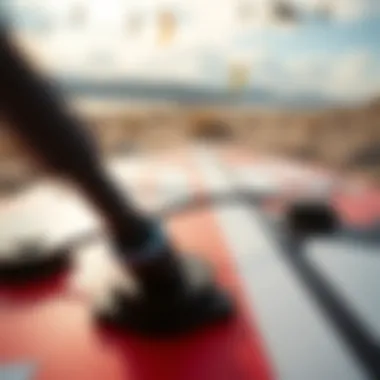
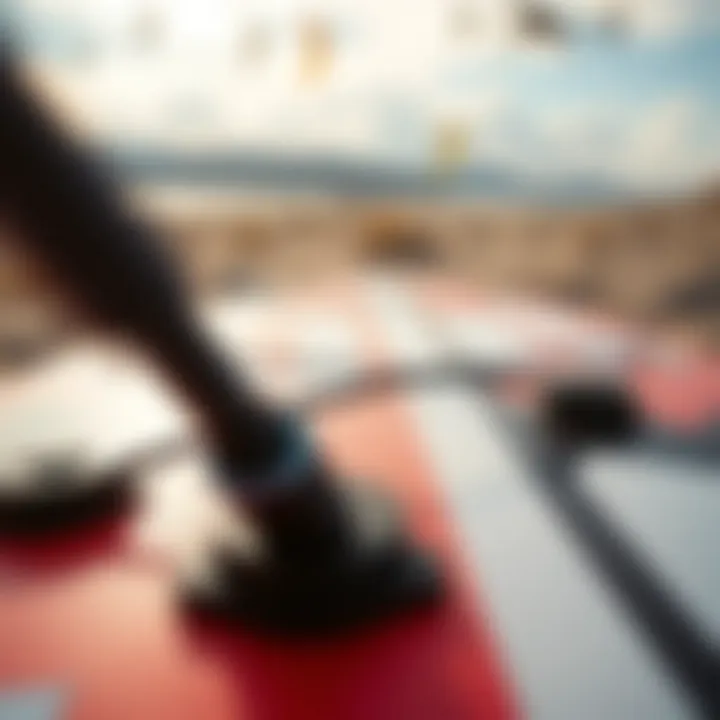
Choosing the Right Kite Board
Selecting the appropriate kite board can greatly influence your overall kiteboarding experience. It’s not just about picking something that looks good; it’s about finding that perfect balance between your riding style, skill, and the conditions you typically encounter. An ill-fitting board can lead to a frustrating experience on the water, while the right one can elevate your skills and enjoyment to new heights.
Skill Level Considerations
When you're on the lookout for a kite board, your current skill level is a major factor to consider. Here’s the rundown:
- Beginners: If you’re new to kiteboarding, opt for a board that offers stability and ease of use. Wider boards, often known for their larger surface area, provide better flotation, making it easier to ride in smaller winds. This can boost your confidence as you learn to control the kite and board simultaneously.
- Intermediate Riders: As your skills improve, you may want to transition to boards that allow for more agility and performance. You might explore twin tips or directional boards that offer different riding experiences. Your choice should depend on whether you enjoy jumping and tricks or prefer more directional riding.
- Advanced Kiteboarders: For the seasoned enthusiasts, the focus shifts to specialized boards that meet high performance needs. Specific features designed for speed, lightness, and maneuverability become crucial. You might also consider boards that match your typical riding environment, whether it’s waves, flat water, or freestyle.
Riding Style Preferences
Your riding style dictates a lot about the type of kite board that suits you best. Here’s a quick overview:
- Freestyle: If you’re aiming for tricks and jumps, you'll want a board with a stiffer flex and a track-dominated fin system. This gives you the pop you need to launch high and land smoothly.
- Freeride: For those who enjoy cruising around without focusing on tricks, a hybrid board with a mellow flex works wonders. This type keeps your ride smooth and stable while allowing you to explore various conditions with ease.
- Wave Riding: If you take on surf conditions, a directional board is the way to go. These boards are designed to handle the ocean's swells and help you carve through waves deftly. Look for boards that are slightly longer, with a more pointed nose to cut through water efficiently.
Size and Dimensions
The dimensions of a kite board are more than just numbers; they directly impact performance. Here’s how to find your fit:
- Length: Longer boards provide more speed and stability, suitable for larger riders or those in lighter winds. Though shorter boards are more maneuverable, making them ideal for tricks and tighter conditions.
- Width: A wider board will give you more surface area, which can be advantageous in light winds, allowing for better upwind performance. Conversely, narrower boards are typically easier to handle during tricks and add to your overall control in stronger winds.
- Volume and Weight: Consider how the volume and weight of a board affect your ride. A board with too much volume might float but can also feel sluggish. Ensuring that the board weight complements your riding style and enables smooth transitions is essential.
Selecting the right kite board isn't just a matter of choice; it's a pivotal decision that can enhance your skills while keeping your enjoyment and safety in check. It serves as your primary tool in forming your unique kiteboarding experience.
In short, considering your skill level, riding style, size, and dimensions is crucial when choosing a kite board. Each of these factors plays a part in ensuring that your kiteboarding escapades are not only thrilling but also fulfilling.
Essential Features of Kite Boards
When diving into the world of kiteboarding, the kite board you select can either elevate your experience or leave you feeling frustrated. There are essential features that play a critical role in not just your performance but also your comfort and safety as you skim across the water. Understanding what these features are will help you make an informed choice to suit your unique style and needs.
Material Composition
The materials used in kite boards affect their durability, performance, and price range. Most kite boards are made from a combination of fiberglass, carbon fiber, and foam core materials. Each of these brings something to the table.
- Fiberglass is often more affordable and offers decent durability. It's suitable for beginners who may not be as careful with their equipment initially.
- Carbon fiber is a premium option that enhances responsiveness and decreases weight. It’s typically found in higher-end boards, favored by more experienced riders.
- Foam cores tend to provide better buoyancy, which can keep you afloat more easily.
Choosing the right material can affect your overall kiteboarding experience. A board that flexes too much may make for a shaky ride, while one that’s too rigid could hinder your ability to maneuver. Consider how each material aligns with your skill level and expected usage.
Stability and Control
Stability and control are paramount when you're out on the water. A well-designed kite board should provide a balance between these two elements, which can significantly enhance your riding experience.
Several factors contribute to this:
- Board Shape: The outline of the board plays a significant role. A wider board may offer better stability for beginners, while a more narrow design allows advanced riders more agility and speed.
- Rocker Line: The curvature of the board from tip to tail. A flatter rocker promotes speed and stability in flat waters, while a pronounced rocker improves performance in choppy conditions.
- Fin Configuration: The size and placement of the fins can impact grip and control. Boards with larger or multiple fins can offer better tracking, which helps in maintaining your course while kiting.
In essence, a high-quality board should feel balanced and allow for confident navigation, particularly in varied conditions.
Weight Considerations
The weight of your kite board significantly influences your performance on the water. A lighter board typically allows for easier handling, making jumps and tricks less strenuous. However, it should also maintain enough weight to provide stability in rough waters.
When assessing weight, think about:
- Personal Strength and Skill Level: Lighter boards might be a great option for users who are physically fit and have developed the necessary skills, while heavier boards could be suitable for those still learning the ropes.
- Wind Conditions: Heavier boards can slice through chop better than lighter ones, but they might require more effort to maneuver.
To find the right balance, testing a few different weights personally, if possible, can give insightful information about what feels right for you.
"When selecting a kite board, it's not just about the price tag; it's about how the features align with your personal kiteboarding style and environment."
As you continue your journey through kiteboarding, keeping these essential features in mind will arm you with the knowledge needed to make an informed choice. This introductory understanding puts you a step ahead, whether it's your first board or a serious upgrade.
Evaluating Kite Board Quality
When it comes to kiteboarding, the quality of your gear can make all the difference between a smooth ride and a harrowing experience. Therefore, understanding how to evaluate kite board quality is essential for both new and experienced kiteboarders alike. It’s not just about how the board looks or its price tag; it’s about how well it meets your needs and performs on the water. Quality encompasses various factors, each playing a critical role in ensuring you have an enjoyable and safe kiteboarding experience.
Brand Reputation
Brand reputation is a significant indicator of quality in the kiteboarding world. Well-known brands often invest substantial resources in research and development, ensuring that their products meet high standards of performance and safety. When considering a kite board, look into brands that are recognized for their innovation and reliability.
- Researching Brands: Take time to Google reviews or visit forums that discuss different kiteboard manufacturers. For instance, companies like North Kiteboarding or Cabrinha have built solid reputations over decades. Their products typically undergo rigorous testing, with feedback loops from professional athletes contributing to design improvements.
- Heeding Warnings: If you find numerous complaints or safety issues associated with a brand, it may be best to steer clear. In a sport like kiteboarding, opting for lesser-known brands without a track record could result in poor performance or, worse, hazardous situations.
"Quality is remembered long after the price is forgotten."
This adage rings particularly true in kiteboarding. Investing in a reputable brand often pays dividends in terms of performance, durability, and resale value.
User Reviews and Recommendations
Another valuable approach in evaluating kite board quality is consulting user reviews and recommendations. While brand reputation provides a background, the real-world experiences shared by other kiteboarders can offer deep insights that advertisements may overlook.
- Reading Reviews: Websites like Reddit or specialized kiteboarding forums can be treasure troves of information. Users often share their personal experiences, breaking down what they liked or disliked about their kite boards. Pay close attention to both positive and negative feedback—this can help you gauge common issues or standout features that might influence your purchase decision.
- Peer Recommendations: Friends or instructors can be great resources. Their hands-on experience can save you from making costly mistakes. Ask them about their gear, what worked for them, and why.
Warranty and Customer Support
Finally, warranty and customer support are critical components to weigh when assessing quality. A solid warranty can be a lifesaver, especially for high-investment items like kite boards, which endure substantial wear and tear.
- Understanding Warranties: Look for brands that offer generous warranties to back their products. A warranty reflects a manufacturer's confidence in their craftsmanship. For example, if a board comes with a two-year warranty, it likely indicates that the materials and build can handle the demands of kiteboarding.
- Supporting Services: Equally important is how a company supports its customers. Reliable customer support can guide you through maintenance questions or help with issues that arise post-purchase. Brands with poor customer service might leave you high and dry when you need assistance.


Evaluating kite board quality involves piecing together information from multiple sources. By scrutinizing brand reputation, leveraging user feedback, and considering warranties, you will be better equipped to make an informed choice that will ultimately enhance your kiteboarding experience.
Budgeting for Your Kite Board Purchase
When contemplating the purchase of a kite board, budgeting is an essential aspect that cannot be overlooked. Many buyers, especially newcomers to the sport, might feel overwhelmed by the price tags they encounter. The reality is that, just as in any other sport, kiteboarding gear can span a wide range of prices. Understanding your budget not only helps in narrowing down your options but also ensures that you make a well-informed decision.
Starting out, it’s wise to determine how much you are willing to spend. This financial roadmap allows you to sift through the multitude of options without getting bogged down in gear that’s out of your price range. Plus, aligning your budget with your skill level and usage frequency will help you avoid buyer’s remorse later down the line.
Understanding Price Range
The price of a kite board can vary significantly based on various factors including brand, materials, and functionalities. Generally, beginners might find themselves looking at boards that fall within the $300 to $700 range, while seasoned kiteboarders might invest in high-performance models exceeding $1,000.
When evaluating options, keep in mind the following:
- Beginner Boards: Generally, any board priced around $300 to $600 can provide excellent value for novices, balancing durability and performance.
- Intermediate to Advanced Boards: For those who have honed their skills and are seeking specifications that support advanced maneuvers, expect prices to range from $700 to $1,500.
- Top-Tier Options: Cutting-edge technology and performance boards often ask for upwards of $1,500, frequently seen amongst kiteboarding enthusiasts who are serious about their gear.
Understanding the price range available not only highlights what you can afford, but also what you can expect in terms of quality and features.
Value Versus Cost
In kiteboarding, it’s crucial to comprehend the distinction between value and cost. Just because something is expensive doesn’t mean it's the best fit for you; conversely, lower-priced boards can sometimes deliver surprising performance.
- Durability: A more expensive board is often built from higher-quality materials and might offer better longevity. Consider how often you plan to ride. If you're out on the water frequently, investing in a durable board might be worth every penny.
- Performance: Each board has its unique specifications that can impact your riding experience. For instance, a board that costs $800 could vastly outperform a cheaper option, giving you better control and stability in various conditions.
- Personal Preference: Reflect on your own riding style and preferences. Sometimes, boards that feel right can be a more valuable investment, even if there’s a slightly higher cost.
In essence, strive to find a balance between your budget and the performance you desire.
Second-Hand Options
Another effective way to manage your budget without compromising your experience is to explore second-hand options. A gently used kite board could provide excellent value for your money if you know what to look for.
Consider these aspects when venturing into the used board market:
- Inspect the Gear Thoroughly: Check for delamination, repairs, or significant wear and tear. Any issues may affect how you ride.
- Research Brands: Some brands have a reputation for better durability than others. Understanding which ones hold up well can save you from dishing out money on boards that’ll require replacement quickly.
- Community Insights: Engage in forums or social media groups dedicated to kiteboarding. These platforms can provide leads on good quality second-hand boards. Websites like reddit.com can be particularly helpful, as fellow snowboarders often share their finds.
- Local Shops: Sometimes local stores sell second-hand gear at reduced prices. This benefits you by ensuring there’s a quality standard emphasized by the retailer.
Where to Find Kite Boards for Sale
Finding the right kite board is crucial for both performance and enjoyment in the sport. Whether you're a beginner or a seasoned rider, knowing where to look for kite boards can significantly influence your purchasing experience. By exploring different avenues—like local retailers, online stores, and specialty shops—you can discover a variety of options that meet your specific requirements. Each of these sources has unique elements to consider, such as pricing, availability, and expert advice.
Local Retailers
When diving into the world of kiteboarding, visiting local retailers should be your first stop. These brick-and-mortar stores provide you the opportunity to see, touch, and even try the equipment before making a decision. Local shops often carry a selection of the latest models, allowing you to compare different boards side by side.
Moreover, you can benefit from the expertise of sales staff who usually have personal experience in kiteboarding. They can offer valuable insights about the boards' performance under various conditions and help you understand what might work best for your skill level and riding style.
- Advantages of Local Retailers:
- Personal Interaction: Get firsthand advice from knowledgeable staff.
- Immediate Purchase: No waiting for shipping – take your board home right away.
- Community Connection: Local shops often have ties to the kiteboarding community, giving you access to lessons and events.
One potential pitfall to consider, however, is that local retailers might have a more limited selection compared to online stores, especially if you're seeking a specific brand or model.
Online Stores
Online shopping has transformed how people buy sporting goods, including kite boards. The convenience of browsing from your couch is unmatched. However, the sheer volume of options can sometimes feel overwhelming.
When exploring online stores, be sure to check out well-respected websites that focus on watersports, like KiteWorldShop.com or Amazon.com, as they often feature customer reviews that can guide your decision. Also, you can easily compare prices across multiple retailers.
- Key Points When Shopping Online:
- Return Policies: Always check if you can return the board if it doesn't meet your expectations.
- Detailed Product Descriptions: Look for in-depth specifications and images to understand what you are buying.
- Shipping Costs and Times: Factor this into your budget, as these can add up quickly.
Some popular online marketplaces include:
- Kiteboarding.com
- eBay
- Local Flamingo's direct website
Specialty Shops and Brands
Specialty shops and brands dedicated solely to kiteboarding gear often provide a focused selection of high-quality options. They might stock niche products or the newest innovations in kiteboarding. When you walk into a specialty shop, you can expect to find not just boards but also a comprehensive range of accessories, from harnesses to kites.
Specialty stores often host demo days or workshops, giving potential buyers a unique chance to test gear before purchase. This can be especially beneficial for advanced riders looking for specific performance features or tech-savvy gear.
- Benefits of Specialty Shops:
- Expert Knowledge: Staff typically have extensive experience in kiteboarding and can provide tailored advice.
- Unique Products: Access to hard-to-find items not available elsewhere.
- Engagement with Community: Meet fellow kiteboarders and get involved in local events.
If you prefer a specialized shopping experience, consider visiting stores like KiteRepublic or checking out the offerings directly from manufacturers like Slingshot or Naish on their websites.
The Importance of Community Feedback
In the world of kiteboarding, where the nuances of equipment can make or break an experience, community feedback stands as a lighthouse guiding enthusiasts through their choices. Gathering insights from those who have sailed these waters before can unveil real-world perspectives that manufacturers often don’t highlight. Peer opinions provide authenticity that polished ads can’t replicate. When looking for a kite board, tapping into the community means accessing lived experiences, recommendations, and potential pitfalls.
Community feedback adds value in several critical areas:
- Shared Knowledge: Riders who've been down the path can share what worked for them and, equally important, what didn’t.
- Evolving Conversations: The kiteboarding scene is always changing. Participants can provide real-time insights into the latest trends and gear improvements.
- Safety Tips: Experienced users often discuss safety gear and maintenance secrets, which can be invaluable for newbies and seasoned kiteboarders alike.
Engaging with kiteboarding feedback not only ensures that you’re making informed decisions but it deepens your connection to the kiteboarding community as a whole.

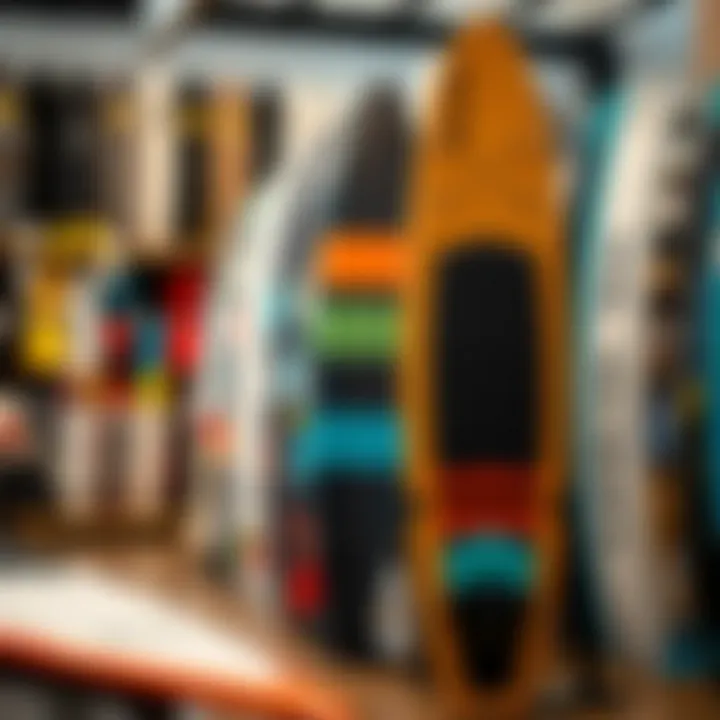
Forums and Discussion Groups
Forums dedicated to kiteboarding can be goldmines of information. They are hubs where enthusiasts congregate to share their knowledge, experiences, and opinions. Communities such as those found on Reddit, where you might want to check out r/Kiteboarding, offer a front-row seat to discussions that can benefit potential customers. You’d be surprised by the level of detail shared within these spaces.
Here are some advantages of participating in forums:
- Diverse Opinions: Getting various viewpoints helps in forming a well-rounded opinion on gear before making a purchase.
- Firsthand Experiences: Many users upload videos and reviews that illustrate their experiences, which can often reveal the practical aspects of products that specs alone might not convey.
- Support Network: When facing challenges—be it technical issues with a board or health and safety concerns—forums act as support groups, providing advice and encouragement.
Social Media Insights
With the dominance of social media, platforms such as Facebook and Instagram have turned into crucial spaces for kiteboarders to interact. Following brands, influencers, and enthusiasts allows individuals to keep abreast of the latest gear updates, industry shifts, and community events. Often, feedback shared here feels more instant and less formal than in traditional forums.
Several ways social media can assist in the decision-making process:
- Real-Time Updates: Manufacturers often announce new products or restocks on social media before anywhere else. This helps in being the first to know about innovative shifts in kiteboarding gear.
- Visuals and Demos: Many posts include videos showcasing equipment in action. This can provide insight into how gear performs under real conditions.
- Direct Interaction: Engaging with brands and fellow riders directly via comments and messages can yield personalized tips that forums may not offer, enriching your knowledge base.
In short, tapping into community feedback through forums and social media can significantly enhance not just the purchasing experience, but also the entire journey in kiteboarding. Enthusiasts armed with insights from their community often find themselves better equipped to make sound choices that lead to memorable adventures on the water.
Safety Considerations in Kiteboarding
Kiteboarding, while exuberant and thrilling, carries its share of risks and challenges. As vibrant as the wind is when it fills your kite, it's equally important to recognize the potential hazards that can arise from ill-preparedness. Understanding safety is actually a fundamental cornerstone of the sport. If you're thinking about diving into kiteboarding or if you're already riding the wind, being aware of the safety aspects of your equipment and environment can make a significant difference in ensuring a smooth ride.
Importance of Gear Quality
The quality of your kiteboarding gear isn’t just about performance—it's about safety. Using subpar equipment can lead to dangerous situations, especially in rapid weather changes. For instance, a faulty kite or a broken control bar could lead to loss of control, putting the rider at risk of injury. Hence, investing in quality gear can make all the difference.
When selecting your kite board and associated equipment, look for the following:
- Durability: High-quality materials can withstand rough conditions.
- Reliability: Well-tested gear by reputable brands minimizes risks.
- Safety Features: Look for features like safety release mechanisms that work properly in emergency scenarios.
- User Reviews: Don’t hesitate to delve into forums or social media sites to see what experienced riders are saying about specific brands.
"Investing in high-quality gear may seem pricey upfront, but it can save you money—and potentially your life—down the line."
Ultimately, when you choose gear that meets high safety standards, you not only elevate your riding experience, but you also significantly increase your safety margin.
Understanding Kiteboarding Regulations
Beyond equipment quality, there are also community and governmental regulations that kiteboarders must adhere to, often put in place to protect both the rider and the public. These regulations vary depending on location and can include restrictions on signal flags, designated kiteboarding zones, and interaction with local wildlife. Ignoring these rules can lead to accidents or even legal consequences. Here’s how to keep yourself in the clear:
- Check Local Laws: Ensure you’re familiar with the local laws beforehand. Look at web resources such as your local government’s parks and recreation site or specialized forums.
- Observe Area Signage: Many kiteboarding spots have signs that provide crucial information about hazards or rules to follow. Take these seriously.
- Be Aware of Other Water Users: Knowing the behavior of boats and swimmers can help prevent collisions. Keeping a safe distance keeps everyone safe.
Moreover, becoming part of a local kiteboarding community can not only help new riders learn the ropes but will also provide insights into changing regulations. This might be through local meet-ups or active discussion boards on platforms like Reddit or Facebook.
Understanding these safety considerations is a must for every kiteboarder. From using quality equipment to adhering to local regulations, taking steps to ensure your safety enhances the enjoyment of the sport and fosters a positive environment among riders.
After-Purchase Considerations
Once you've taken the plunge and selected a kite board, it's essential not to kick back and forget about it. The after-purchase phase plays a pivotal role in ensuring that your investment pays off in the long run. From maintenance routines to potential upgrades, several critical factors influence your kiteboarding experience and the board's overall performance.
Maintenance and Care
Taking care of your kite board isn’t just about giving it a good rinse after a beach day; it’s about establishing a regimen that keeps your gear in top shape. Proper maintenance extends the lifespan of your equipment and enhances performance. Consider the following points:
- Regular Cleaning: Saltwater, sand, and dirt can wreak havoc on your board. After each session, make it a habit to rinse your board with fresh water. This simple act can prevent corrosion and build-up.
- Inspect for Damage: Periodically check your board for any cracks or scratches. Small damages might seem harmless at first, but they can escalate if left unattended, perhaps leading to a compromised performance.
- Storage: Store your board in a cool, dry place, away from direct sunlight. Keeping it in a storage bag can help protect it from physical damage. A well-stored board is a happy board!
By following these habits, you're not just nurturing your gear; you're also ensuring every kiteboarding experience remains thrilling and safe.
Upgrading Your Equipment
As you grow in the sport, your skills will likely outpace your gear. Recognizing when to upgrade is crucial for maximizing your kiteboarding experience. Consider these factors when weighing an upgrade:
- Skill Growth: If you've unlocked new tricks or require more finesse in your rides, it might be time to seek a board that better meets your evolving needs. For instance, a beginner-friendly twin tip might not cut it once you're striving for those strapless maneuvers.
- Technological Developments: Kiteboarding gear is constantly evolving, with manufacturers introducing boards boasting lighter materials and improved designs. Staying abreast of these innovations can enhance performance significantly. You may find boards featuring flexible designs that allow for better control and responsiveness.
- Comfort and Fit: As with shoes, the right fit and feel can make a colossal difference in performance. If you find yourself struggling with control or simply not enjoying rides, testing out new models that promise better ergonomics could be the ticket.
- Community Feedback: Engaging with the kiteboarding community, be it through forums or social groups, can provide insights into what boards cater to specific needs. Use this knowledge to inform your decision, taking into account what’s buzzing among other riders.
In summary, the journey doesn't end with a purchase. Embracing proper maintenance and staying aware of when to upgrade your kite board can lead to more exciting and skillful sessions on the water. Remember, there's always room for improvement!
"In kiteboarding, just like in life, you're only as good as your tools and how you care for them."
For more tips on maintaining your gear or upgrading wisely, check out resources on Reddit and other dedicated forums.
Future Trends in Kiteboarding Gear
The world of kiteboarding is no longer just about wind and water; it’s an arena where innovation meets adventure. As kiteboarders seek out ways to enhance their performance and experience, future trends in kiteboarding gear hold both compelling possibilities and essential considerations. Understanding these trends can guide enthusiasts in selecting gear that not only meets their current needs but also forecasts the changes in the sport.
Technological Advancements
In recent years, technological advancements have played a pivotal role in transforming kiteboarding gear. Today's manufacturers are exploring lightweight materials, improved aerodynamics, and enhanced control systems, allowing kiteboarders to ride with more stability and efficiency.
For example, inflatable kites with sophisticated design adjustments can respond quicker to wind changes, giving the rider a responsive feel on the water. These innovations can also reduce drag, enabling longer rides and greater speed potential. Additionally, smart technology is making its way into the sport; imagine kites equipped with sensors that relay real-time performance data directly to a smartphone. This data can provide insights into wind speeds, board dynamics, and personal performance metrics, allowing riders to fine-tune their setups meticulously.
Moreover, digital platforms and applications are revolutionizing how kiteboarders find suitable locations based on weather conditions, current tides, and even community feedback. This tech integration not only elevates the riding experience but also promotes a more connected kiteboarding community.
"The fusion of technology and kiteboarding gear is not just trend; it’s the future of the sport itself."
Sustainable Practices
As environmental concerns grow, the kiteboarding industry is witnessing a shift towards sustainable practices. Many manufacturers are now focusing on eco-friendly materials and processes in their production lines. For instance, kiteboards made from renewable materials, such as bamboo or recycled plastics, are becoming increasingly popular.
Sustainable practices extend beyond materials. Brands are adopting more responsible manufacturing processes, reducing waste, and emphasizing durability to extend the lifecycle of their products. This not only helps protect natural waterways but also promotes a culture of responsible consumption among kiteboarders.
Additionally, more consumers are becoming environmentally conscious, seeking out brands that align with their values. This shift drives the demand for sustainable kiteboarding gear, encouraging companies to innovate while minimizing their ecological impact. Riders can support these efforts and contribute to a healthier planet with every purchase they make.
Ultimately, the future of kiteboarding gear is a blend of advanced technology and a commitment to sustainability. By staying informed about these trends, kiteboarders can make informed choices that not only enhance their performance but also contribute positively to the environment.
For more insight into the future of sports gear, you can visit Wikipedia or check discussions on platforms like Reddit for the latest community insights.







